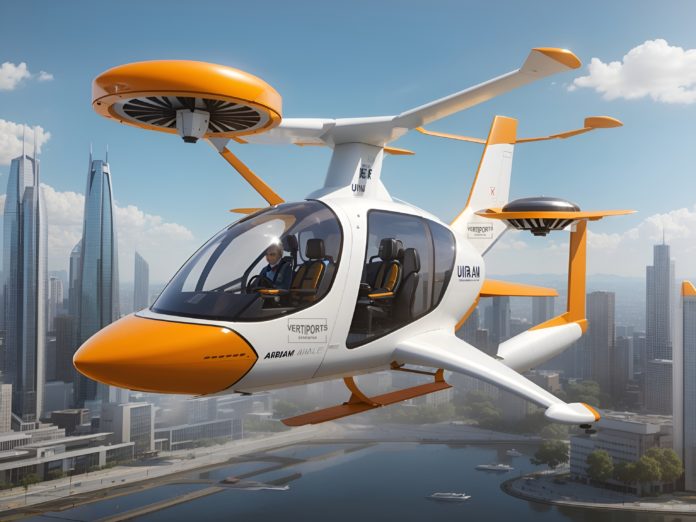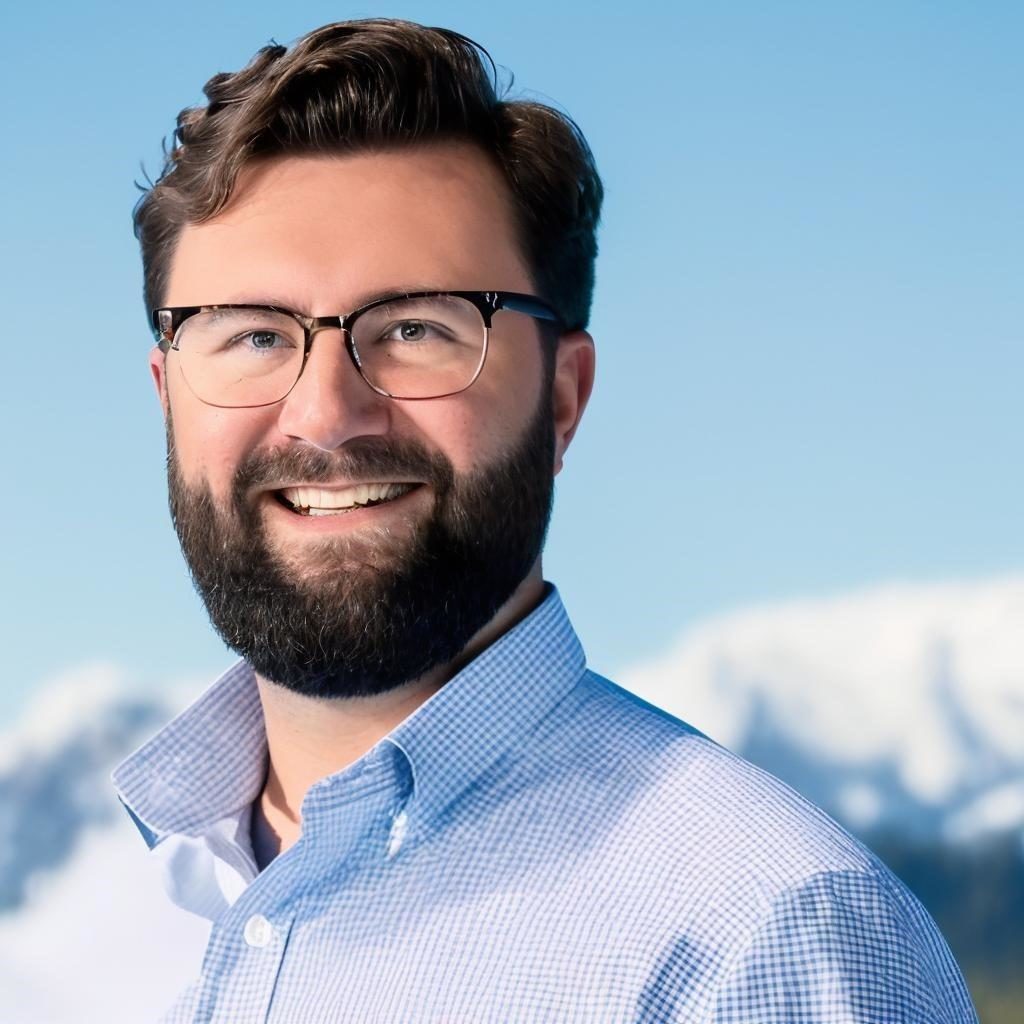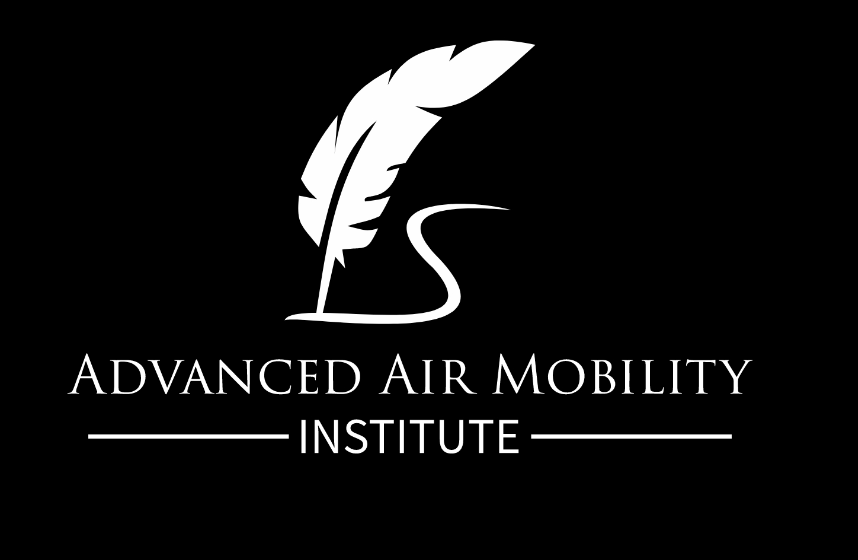
Londra – Ho conosciuto Dan C. Sloat nell’ascoltare un suo intervento al Dubai Airshow 2023. Ho poi approfondito la sua conoscenza: oltre ad essere il fondatore e presidente a Boston dell’Istituto per la Mobilita’ Aerea Avanzata ed e’ anche CEO di Volatus Infrastructure & Energy Solutions, uno dei principali fornitori al mondo di progettazione di vertiport e stazioni di ricarica per la mobilità elettrica.
 Ex capitano dell’aeronautica degli Stati Uniti, è stato responsabile dell’orchestrazione di 13.000 droni durante l’OEF. Dopo il suo impegno di servizio, Dan ha conseguito un master in economia, un master in amministrazione aziendale e un dottorato in giurisprudenza. Presta la sua esperienza alla Comunità nazionale australiana di pratica per la ricerca UAS e AAM. Dan è membro della Royal Aeronautical Society e fa parte del comitato AVIATE del World Economic Forum per fornire consulenza sul futuro del volo autonomo.
Ex capitano dell’aeronautica degli Stati Uniti, è stato responsabile dell’orchestrazione di 13.000 droni durante l’OEF. Dopo il suo impegno di servizio, Dan ha conseguito un master in economia, un master in amministrazione aziendale e un dottorato in giurisprudenza. Presta la sua esperienza alla Comunità nazionale australiana di pratica per la ricerca UAS e AAM. Dan è membro della Royal Aeronautical Society e fa parte del comitato AVIATE del World Economic Forum per fornire consulenza sul futuro del volo autonomo.
Pilota di droni, sommelier alle prime armi, cabarettista, insegnante di inglese, regista, pittore di olio, fantino , marinaio diurno e umanitario.
Chi meglio di lui puo’ illustrare ai nostri affezionati lettori il settore emergente che migliorera’ il collegamento interno alle grandi città, e con le periferie, le piccole citta’ e con villaggi?
Allora ho deciso di porgli alcune domande che ho il piacere di condividere con i nostri affezionati lettori sparsi in tutto il mondo.
 Riccardo: Buongiorno mr. Sloat, quando e perché è stato fondato l’Istituto AAM?
Riccardo: Buongiorno mr. Sloat, quando e perché è stato fondato l’Istituto AAM?
Daniel C. Sloat: “L’Istituto AAM è stato fondato ufficialmente nel marzo 2023, quasi un anno fa ormai. In breve, il catalizzatore dietro il lancio dell’Istituto è stato il riconoscimento che è chiaramente troppo ingenuo presumere che un nuovo settore come questo possa portare naturalmente e costantemente beneficio al cittadino comune di tutto il mondo di propria iniziativa. Ci sono troppe pressioni per un ritorno sull’investimento rapido e robusto. Vogliamo essere una voce forte per sostenere l’equa distribuzione dei soldi dei contribuenti verso il settore AAM per garantire che non avvantaggi esclusivamente le élite ricche. Vogliamo anche incoraggiare un approccio proattivo alla protezione dei diritti civili, ambientali e umani dalle violazioni lungo il percorso. Le organizzazioni non profit sono in una posizione unica per far crescere la consapevolezza pubblica fino all’accettazione e, infine, alla fiducia del pubblico perché possono mantenere l’imparzialità.”
Riccardo: Leggiamo che la sua missione è: “educare e sostenere il più ampio beneficio pubblico attraverso l’ecosistema AAM a livello globale“… come sarà raggiunto questo obiettivo?
Daniel C. Sloat: “Consideriamo l’istruzione come una ricerca che dura tutta la vita presso l’AAM Institute. Sosteniamo sforzi che vanno dall’istruzione STEM nelle scuole elementari o dai programmi doposcuola ai tirocini e stage nelle scuole di specializzazione e persino alle iniziative di sviluppo della forza lavoro per le economie in transizione. L’educazione sulle implicazioni delle operazioni AAM è qualcosa di cui hanno bisogno anche i nostri decisori governativi e scrittori politici più esperti ed esperti perché la tecnologia è ancora così nuova. Svolgiamo la nostra missione educativa e di advocacy con una varietà di mezzi su misura per il pubblico più critico del momento.”
Riccardo: Vedete differenze in questo settore tra Usa e Unione Europea?
Daniel C. Sloat: “Una differenza sorprendente tra gli Stati Uniti e l’Unione Europea, ovvero FAA vs EASA, è che negli Stati Uniti generalmente abbiamo più spazio da utilizzare e si prevede che le dimensioni del vertiport abbiano almeno il 50% in più totale attraverso i bordi dell’area di sicurezza. Il tempo dirà se il margine di manovra aggiuntivo per i piloti eVTOL americani sarà sempre vantaggioso dal punto di vista dell’errore umano. L’UE può sfruttare gli insegnamenti dei primi pionieri come l’Italia (che ha ottenuto un’indennità speciale per iniziare a offrire voli eVTOL prima della fine di quest’anno!) senza sentirsi obbligata a consentire le operazioni AAM ovunque contemporaneamente. Negli Stati Uniti, la FAA avrà difficoltà a consentire a uno stato di fornire voli commerciali negando a tutti gli altri.”
Riccardo: Come considerare il mercato AAM cinese?
Daniel C. Sloat: “È difficile sostenere che la Cina non abbia un vantaggio dominante nella produzione di droni UAS. Inoltre, tale esperienza è abbastanza facile da tradurre nel velivolo eVTOL che ora prende la forma dell’EH-216. Questo modello EHang ha ricevuto la certificazione di tipo prima della fine del 2023 e vola oggi. Con oltre 1 miliardo di persone, EHang rimarrà molto occupato anche se non verrà mai certificato dalla FAA.”
Riccardo: Con AAM siamo all’inizio di una nuova era sia nei trasporti che nelle strutture. Cosa percepiranno inizialmente i consumatori di tutto il mondo?
Daniel C. Sloat: “Ottima domanda, Riccardo!L’evoluzione della percezione del pubblico è particolarmente importante per noi dell’Advanced Air Mobility Institute. Ci sono una serie di obiezioni prevedibili: le preoccupazioni sull’inquinamento acustico e visivo porteranno rapidamente a richieste di risarcimento danni legali che inondano i governi locali e statali dalla folla di not-in-my-backyard (NIMBY). In quanto ecosistema AAM, è fondamentale affrontare tali obiezioni tempestivamente e spesso con dati reali e tangibili. Questo è uno spazio molto entusiasmante in cui trovarsi oggi, ma dobbiamo assicurare alla gente che i vertiport non sono aeroporti ed è molto più probabile che migliorino i valori delle case immobiliari circostanti come servizi piuttosto che deprimerli. Anche le preoccupazioni relative alla privacy non dovrebbero essere ignorate. I droni sono già stati abusati in questo modo, quindi dobbiamo essere empatici con le comunità che sollevano questo problema. In definitiva, le persone vogliono solo sentirsi ascoltate e sapere che i loro rappresentanti stanno lavorando per proteggerle da tali minacce.”
Riccardo: Grazie per aver accettato l’intervista!
Daniel C. Sloat: “Grazie a te! E’ stato un piacere illustrare ai lettori di italynews.it il nostro istituto, ma anche e sopratutto i vantaggi che la mobilita’ aerea avanzata portera’ nel mondo alle persone e all’ambiente.”
Riccardo Cacelli
ENGLISH VERSION
I met Dan C. Sloat while listening to his speech at the Dubai Airshow 2023.
I then deepened my knowledge of him: in addition to being the founder and president of the Institute for Advanced Air Mobility in Boston and he is also CEO of Volatus Infrastructure& Energy Solutions, one of the world’s leading suppliers of vertiport and charging station designs for electric mobility.
A former captain in the United States Air Force, he was responsible for orchestrating 13,000 drones during OEF.
Following his service commitment, Dan earned a master’s degree in economics, a master’s degree in business administration, and a juris doctorate.He lends his expertise to the Australian National Community of Practice for UAS and AAM research.
MR. Sloat is a Member of the Royal Aeronautical Society and sits on the World Economic Forum’s AVIATE committee to advise on the future of autonomous flight.Drone pilot, novice sommelier, stand-up comedian, English teacher, filmmaker, oil painter, horse rider, day sailor, and humanitarian.
Who better than him can illustrate to our loyal readers the emerging sector that will improve internal connections to large cities, and with the suburbs, small towns and villages?
So I decided to ask him some questions that I have the pleasure of sharing with our loyal readers around the world.
Daniel C. Sloat: “Excellent question, Riccardo! The evolving public perception is especially important to us at the Advanced Air Mobility Institute. There are a number of foreseeable objections: noise and visual pollution concerns will quickly lead to legal nuisance claims flooding local and state governments from the not-in-my-backyard (NIMBY) crowd. As an AAM ecosystem, it’s vital that we address such objections early and often with real, tangible data. This is a very exciting space to be in today but we need to assure people that vertiports are not airports and it’s much more likely to improve the surrounding real estate home values as an amenity rather than depress them. Concerns surrounding privacy should not be glossed over either. Drones have already been abused in this way so we must be empathetic to communities who raise this issue. Ultimately, people just want to feel heard and to know that their representatives are working to protect them from such threats”.
Riccardo: Thanks for accepting the interview!
Daniel C. Sloat: “Thanks to you! It was a pleasure to illustrate our institute to the readers of italynews.it, but also and above all the advantages that advanced air mobility will bring to people and the environment around the world”.


